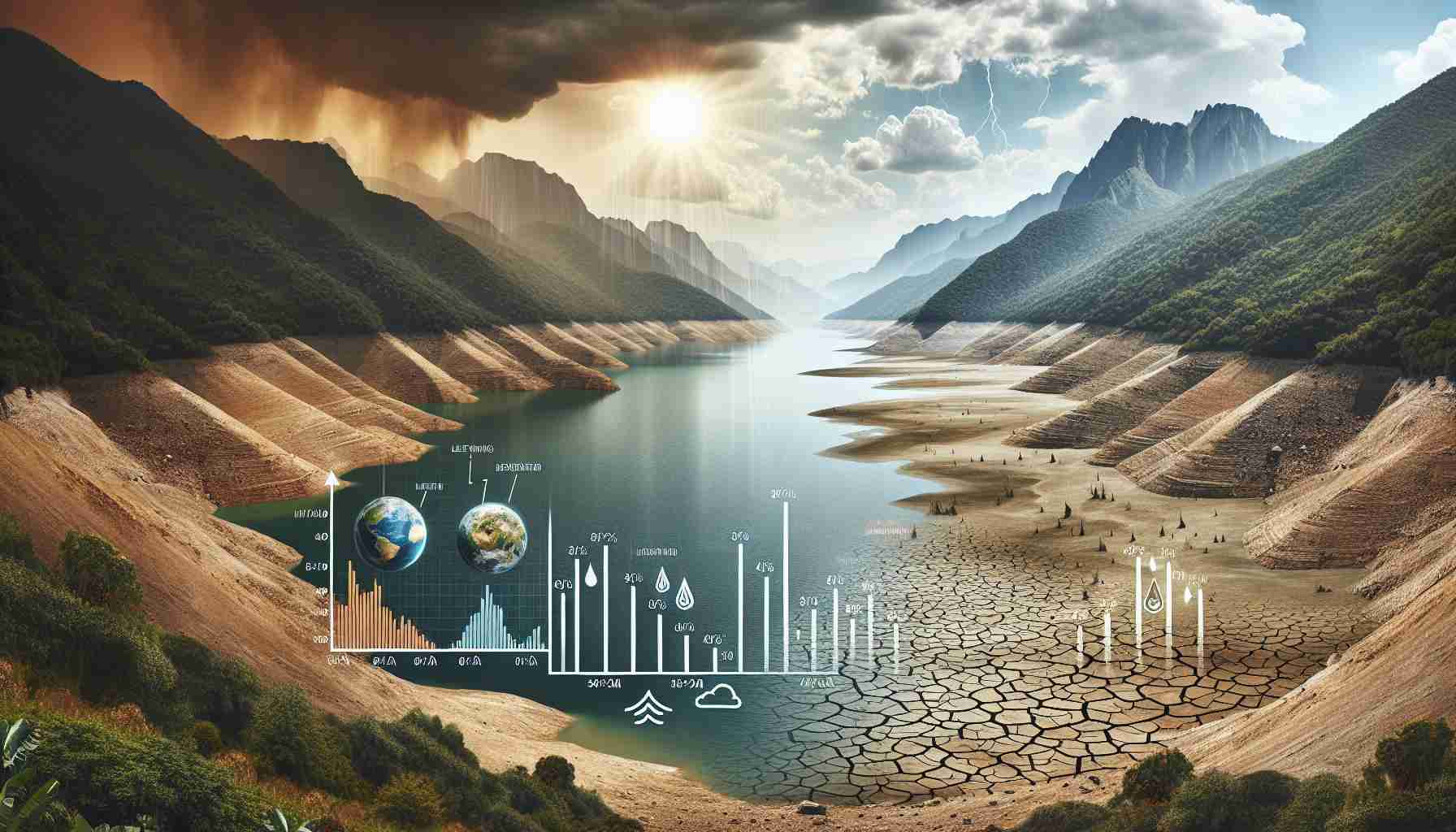
Recent research has unveiled a troubling decline in the Earth’s fresh water supply, indicating a potential shift towards severe drought conditions. Since 2015, the volume of freshwater stored in lakes, rivers, and aquifers has diminished dramatically, totaling a staggering loss of 290 cubic miles (1,200 cubic km). This amount is comparable to draining Lake Erie two and a half times.
The decline aligns with an El Niño phenomenon observed from 2014 to 2016, which usually leads to temporary fluctuations in freshwater levels. However, satellite data up until 2023 suggests that these levels have not rebounded, raising concerns that they may continue to fall.
Scientists point out a significant relationship between climate change and increasing evaporation rates, which consequently escalates atmospheric moisture levels. This leads to more intense storms where precipitation fails to effectively infiltrate the ground, contributing to the ongoing freshwater crisis.
The impact is far-reaching, affecting nearly 3 billion people and jeopardizing over half of the world’s food production. The study utilized advanced satellite technology to measure subtle changes in gravitational forces, confirming that a notable portion of the freshwater lost during the last El Niño has not returned and many severe droughts have emerged since early 2015.
As further satellite observations are anticipated over the coming years, the future of freshwater availability remains uncertain, with experts emphasizing the need for urgent action to manage and protect water resources effectively.
Freshwater Resources Face Critical Decline Amid Climate Shift: An Urgent Call for Sustainable Solutions
In recent times, the alarming reduction of freshwater resources has emerged as a pressing issue globally. New studies highlight vital aspects of this ongoing crisis that further underscore the urgency of developing sustainable water management strategies.
What are the primary causes of the freshwater decline?
The primary causes of the decline in freshwater resources include climate change, population growth, and unsustainable agricultural practices. Rapid urbanization has increased demand for water, while climate change exacerbates existing water scarcity due to altered precipitation patterns and increased evaporation rates. Unsustainable agriculture relies heavily on freshwater and frequently contributes to its decline through over-extraction.
How is the climate crisis influencing freshwater availability?
The evolving climate crisis disrupts the hydrological cycle, making weather patterns more erratic. Changes in rainfall frequency and intensity, coupled with prolonged drought periods, create a cycle of scarcity and excess that prevents adequate replenishment of freshwater sources. The increased frequency of extreme weather events, such as hurricanes and floods, also leads to polluted runoff which damages freshwater ecosystems.
What are the key challenges in addressing freshwater decline?
One major challenge is political will; many countries struggle to prioritize water management or lack the necessary infrastructure and technology to implement effective solutions. Additionally, transboundary water resources create disputes between nations that complicate joint conservation efforts. There is also an increasing competition for freshwater from energy production, industrial use, and household consumption, making it essential to balance competing demands.
Are there controversies surrounding water management approaches?
Yes, there are several controversies. The implementation of large-scale water management projects, such as dam construction, has sparked debates about ecological damage and displacement of local communities. In some regions, privatization of water resources raises concerns about equitable access, with potential implications for vulnerable populations. Critics argue these actions often prioritize commercial interests over community needs.
What are the advantages and disadvantages of current freshwater management strategies?
One advantage of modern water management strategies is the promotion of conservation technologies, such as drip irrigation and rainwater harvesting, which help mitigate water loss, especially in agriculture. Integrated water resource management (IWRM) frameworks encourage stakeholder participation and promote sustainability.
However, disadvantages include the slow implementation of these strategies due to lack of funding and technological access in developing nations. Moreover, some of these methods may inadvertently lead to the neglect of traditional water management practices that have been effective for local communities for generations.
What can be done to reverse the trend of freshwater decline?
To reverse this trend, a multi-faceted approach is essential. Increased investments in infrastructure to capture and store rainfall, enhanced management of existing freshwater ecosystems, and enforcement of sustainable agricultural practices are critical. Education and awareness initiatives can also empower communities to adopt water-saving measures effectively.
The challenge of freshwater scarcity is intensifying with each passing year, and without immediate global collective action, the implications of this crisis could be catastrophic. As experts highlight the urgent need to address these issues, stakeholders must collaborate on sustainable solutions to protect this invaluable resource.
For more information about freshwater resource management, visit World Bank or UN Water.



